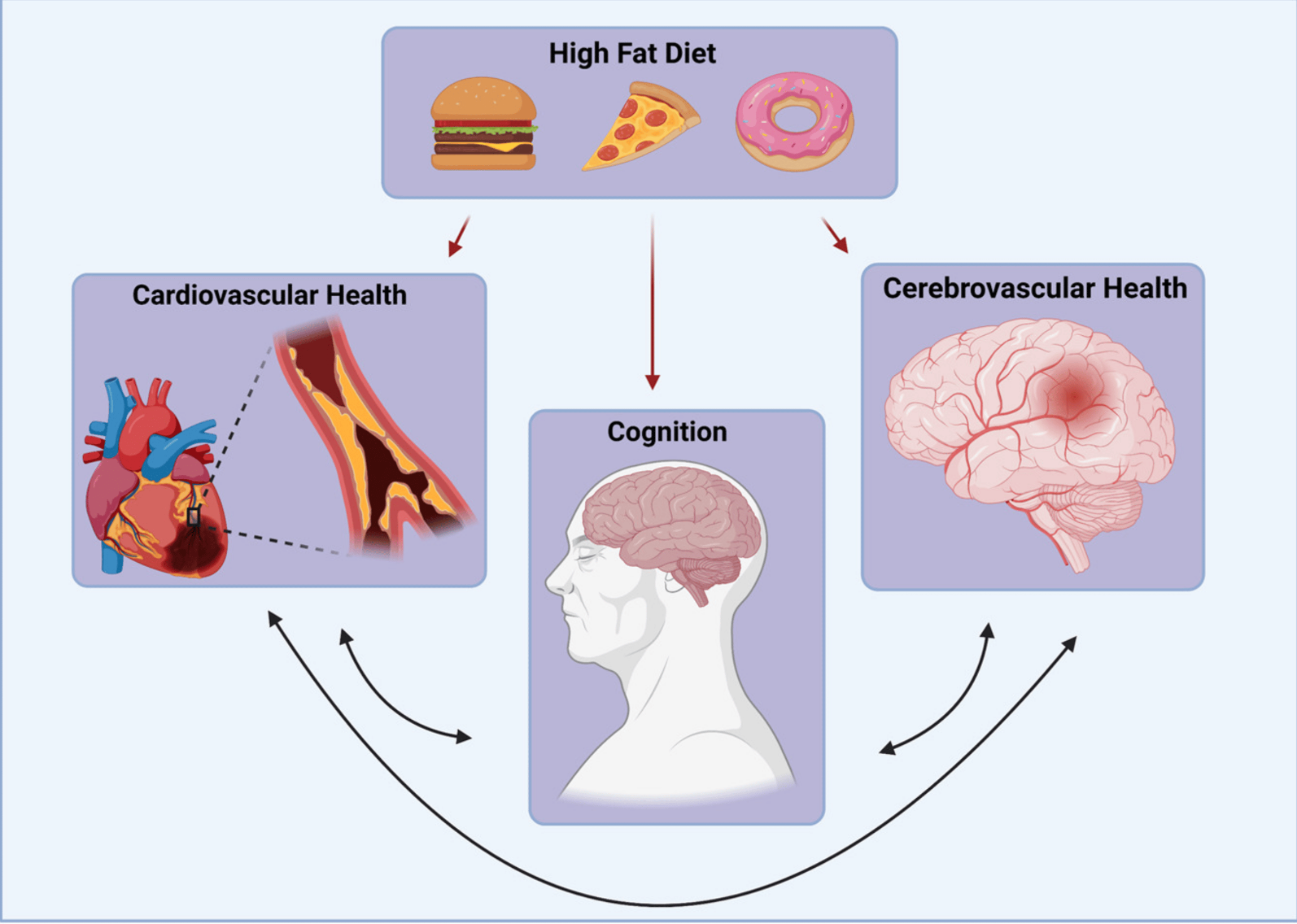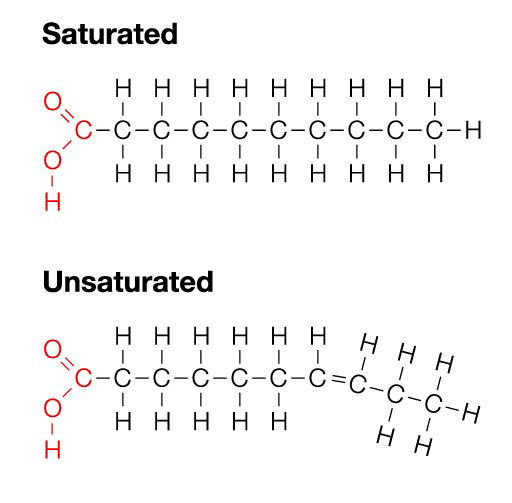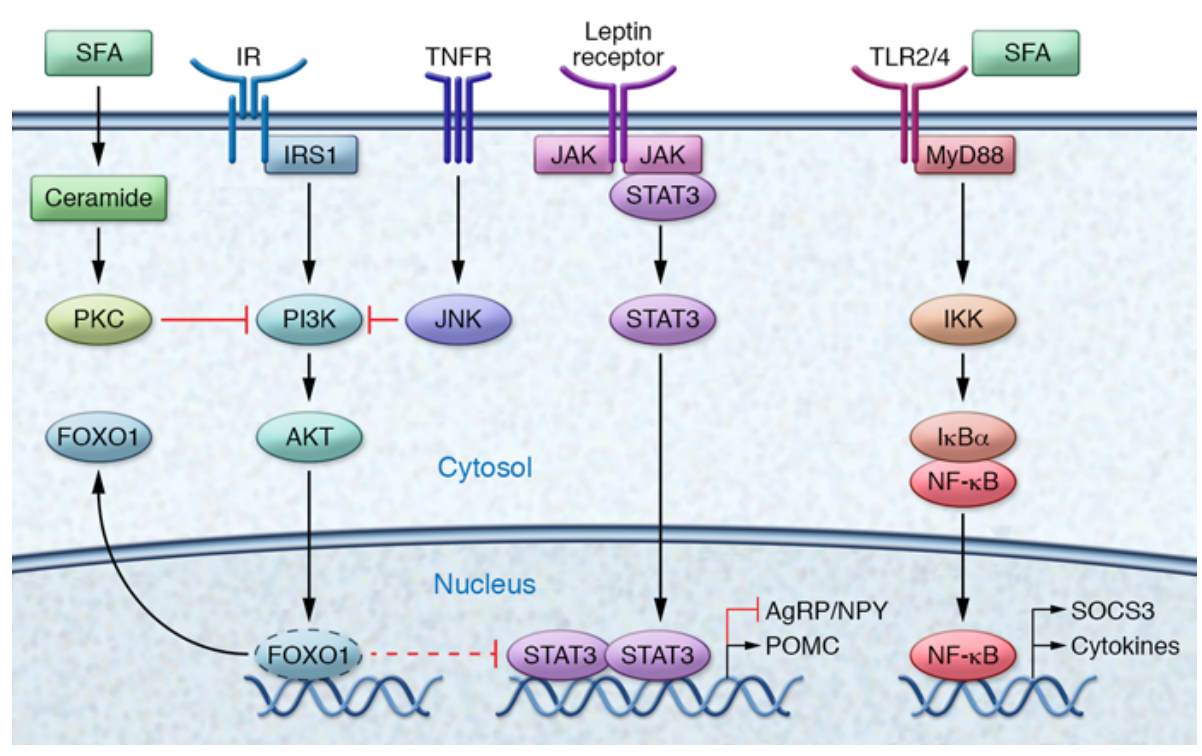Melanocortin System
The melanocortin system is located in the hypothalamus. The primary role of the melanocortin system is to maintain glucose homeostasis as well as insulin secretion and glucose production and utilization [1]. The melanocortin system contains neural populations that have high levels of receptors that respond to metabolic cues to control food intake and energy expenditure. One type of neuron in the melanocortin system is POMC neurons which are inhibitory, anorexigenic neurons which inhibit appetite, and the other primary type of neuron is AgRP neurons which are excitatory, orexigenic neurons which stimulate appetite. When the brain is working “normally,” AgRP neuron expression is increased during fasting to induce feeding and suppress energy expenditure. In obesity or metabolic disease, AgRP neurons are activated more than they should be and positively regulates feeding behavior. [2]

High-Fat Diet
A high-fat diet (HFD) is a diet in which at least 35% of the calories consumed come from either saturated or unsaturated fats [3]. Long-term consumption of a HFD many times results in obesity. Consuming a HFD for a long period of time has various acute effects. Obesity causes activation of cytokines and inflammatory pathways in the hypothalamus. A HFD has been found to reduce insulin sensitivity in the hypothalamus in rats. [2]

Saturated Fatty Acids
Saturated fatty acids (SFAs) are more problematic than unsaturated fatty acids because they tend to stay solid at room temperature, and therefore are more likely to clog the arteries compared to unsaturated fats which are liquid at room temperature. SFAs can negatively modulate energy homeostasis by inducing hypothalamic inflammation and promote positive energy balance by passing the blood-brain barrier (BBB). SFAs can also trigger the activation of the inflammatory signaling cascade TLR4. [2]

Inflammatory Pathway
SFAs have a big impact on the PI3K pathway (insulin pathway) by inhibiting PI3K, so the FOXO protein does not translocate to the nucleus and does not allow transcription to occur. TNFɑ, an inflammatory cytokine, is activated which then activates JNK which inhibits the insulin pathway by inhibiting PI3K. The Jak/Stat pathway (leptin pathway) is also inhibited in this case as NFB activates SOCS which inhibits the pathway. TLR4 also has an effect on NFB as IKK dissociates from NFB and activating it. This all results in an increase in cytokines and AgRP neurons while simultaneously decreasing POMC neurons. [2]

Treatment Options
Dietary Changes
One of the best ways to overcome obesity is cutting calories and making healthier eating choices. There is no specific “magical” diet that works for everyone, but generally the best habits for eating changes include: cutting calories, eating foods that have less calories, eating more plant-based foods, and restricting high-carb and high-fat foods.
Exercise and Activity
It is recommended that individuals with obesity get at least 2 and a half hours of exercise every week at a moderate intensity. This will increase as time goes on and fitness improves. Any extra opportunities to move your body are also recommended like taking the stairs rather than the elevator or parking further away from entrances so you have to walk farther.
Behavior Modification
It can be helpful to speak to a counselor to discuss emotional and behavioral issues that are related to eating. This can also help with understanding overeating and recognizing triggers for eating and food cravings.
Medications
There are some medications that are FDA approved to treat obesity, but they are not meant to be a replacement for adopting a healthy lifestyle. These medications are meant to be taken alongside regular exercise and diet changes. [6]

References
[1] Hill, J. W., & Faulkner, L. D. (2017). The Role of the Melanocortin System in Metabolic Disease: New Developments and Advances. Neuroendocrinology, 104(4), 330–346. https://doi.org/10.1159/000450649
[2] Jais, A., & Brüning, J. C. (2017). Hypothalamic inflammation in obesity and metabolic disease. The Journal of Clinical Investigation, 127(1), 24–32. https://doi.org/10.1172/JCI88878
[3] Krisanits, B., Randise, J. F., Burton, C. E., Findlay, V. J., & Turner, D. P. (2020). Chapter Three—Pubertal mammary development as a “susceptibility window” for breast cancer disparity. In M. E. Ford, N. F. Esnaola, & J. D. Salley (Eds.), Cancer Health Equity Research (Vol. 146, pp. 57–82). Academic Press. https://doi.org/10.1016/bs.acr.2020.01.004
[4] Zimmerman, B.; Kundu, P.; Rooney, W.D.; Raber, J. The Effect of High Fat Diet on Cerebrovascular Health and Pathology: A Species Comparative Review. Molecules 2021, 26, 3406. https://doi.org/10.3390/molecules26113406
[5] Explain saturated fatty acids. + Example. (n.d.). Socratic.Org. Retrieved April 28, 2024, from https://socratic.org/questions/explain-saturated-fatty-acids
[6] Obesity—Diagnosis and treatment—Mayo Clinic. (n.d.). Retrieved April 28, 2024, from https://www.mayoclinic.org/diseases-conditions/obesity/diagnosis-treatment/drc-20375749
[7] Learn About How Obesity Is Treated and Managed. (n.d.). Verywell Health. Retrieved April 28, 2024, from https://www.verywellhealth.com/treatment-for-obesity-7971239
